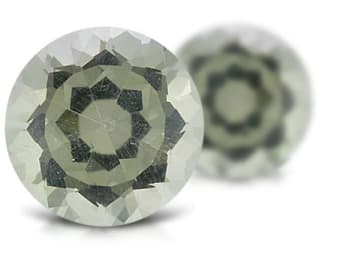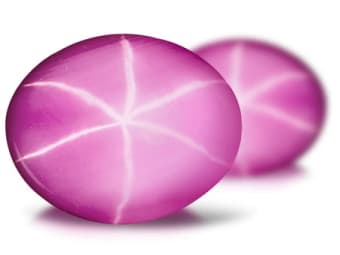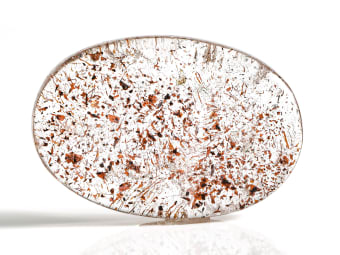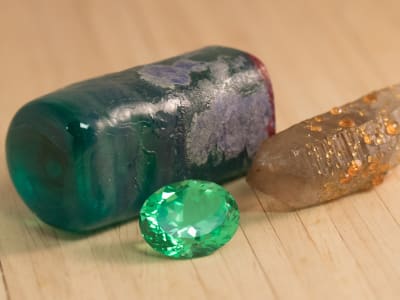What are natural gemstones?
Natural gemstones are formed by nature without human intervention and valued for their beauty, durability and rarity.
Types of natural gemstones
Most natural gemstones are forms of mineral crystals, including, but far from limited to:
There are also four categories of organic gemstones, which are the following:
What are lab created gemstones?
Lab created is a broad category that includes all man-made or synthetic gemstones, whether they have a natural counterpart or not.
Types of lab created gemstones
Note: These are Gemstones.com definitions. The industry may have slightly different definitions for these terms. Keep in mind that these terms often overlap in their definitions.
- Synthetic gems - manufactured gemstones that contain the exact chemical composition and atomic structure as its natural counterpart. A synthetic diamond is a real diamond. The only difference is it is created in a lab, and thus far more affordable.
- Man made - manufactured materials that do not have natural counterparts. Plastic and Swarovski crystals are examples of manmade gems.
- Simulant - a "look
alike" or imitation that mimics the appearance of another more
expensive gemstone. It does not contain the exact chemical
composition and atomic structure as the natural gemstone and can be
natural or lab created.
- Natural simulant - a different gemstone with a similar appearance
- Lab created simulant - a non-gemstone material with a similar appearance

Where are gemstones found in nature?
With over two hundred known varieties of natural gemstones, gems can be found in nature on every continent in the world. Many gemstones are located deep underground and uncovered through commercial mining operations. Other varieties are found near volcanoes, craters, hot springs or fault lines.
If you have ever wanted to go hunting for your own gemstones, you might be closer than you think. You can find gemstone mines open to the public in many states including New Mexico, North Carolina, Arkansas and California.
How do gemstones form in nature?
Thousands or even millions of years ago, nature created the vast majority of natural gems we can now find through one of three processes.
- Metamorphic gemstones, including tanzanite, garnet, ruby, sapphire, emerald and spinel, are created when extreme pressure and heat deep below the surface of the earth forces existing rocks to undergo changes to their chemical structure and properties.
- Igneous gemstones, such as tourmaline, aquamarine, topaz and kunzite, form by minerals recrystallizing inside of small spaces created by cooling magma. Over time, secondary deposits can form inside of igneous rock when additional chemicals are transported into the crevices by extremely hot water. Examples of gemstones formed through this hydrothermal process include amethyst, larimar and fire opal.
- Sedimentary gemstones, including jet, aragonite and calcite, are formed when fragments of eroded rock, shell, minerals or other materials become cemented together.
How do gemstones form in a lab?
Just as natural crystals grow in a variety of conditions, lab created gemstones also use a wide variety of methods, equipment, pressures, temperatures and ingredients to best replicate each gemstone. Here are some of the most common techniques and materials used for creating synthetic and man made gemstones:
Glass
Glass can imitate most any gem material, often in surprising ways. Many different translucencies, colors, inclusions and optical properties can be created through various known and proprietary formulas. However, unlike most gemstones, glass is not crystalline.
Ceramics
This is not the same ceramic used in your porcelain dishes or pottery. Instead, these ceramics encompass a wide range of chemically bonded materials used for making imitation opaque gems, such as turquoise, coral, malachite and lapis. Unlike most artificial gemstone methods used today, this process actually dates all the way back to the ancient Egyptians.
Flame Fusion (Verneuil)
Flame fusion rubies, also known as Verneuil ruby after its originator, are created by sprinkling powdered ingredients through a flame. As it cools, the melted powders crystalize into a boule crystal. Today, this process is used for creating synthetic ruby, sapphire and spinel in many colors, including ones not found in nature, and typically have good clarity.
Flux-Grown
The flux-growth method recreates the environment and ingredients in which natural gems form in the earth inside a laboratory. The flux-growth method uses a crucible and carefully controlled heat to dissolve the raw ingredients in fluxes, then allows it to slowly recrystallize. This creates natural-looking inclusions, but takes more time than the flame-fusion method and is more expensive. Synthetic spinel, ruby, sapphire and emerald can all be made using the flux-growth method.
Hydrothermal
The hydrothermal process allows crystals to form in a fluid, which is contained inside a pressure and heat controlled container known as an autoclave. This method creates inclusions and characteristics very similar to those seen in natural gemstones, but is a slower and more expensive way of producing gemstones. The hydrothermal process is used to create true synthetic alexandrites, quartzes and emeralds.
Skull Melt
The skull melt process is exclusively used to produce cubic zirconia because of the extreme temperatures required. Instead of a metal container that would melt, a cooled layer of cubic zirconia is used to create its own self-crucible. Radio frequency-generated heat melts the central material while the outer edges are water-cooled. These cooled outer edges get a whitish appearance, which is where the skull melt process gets its name.
Czochralski Pull and Zone Melt
Similar to the flame-fusion method, the Czochralski pull and zone melt methods both start with raw powder that is melted and cooled into a single large crystal. In zone melt, the powders are pressed together tightly into a long tube then exposed to carefully timed and controlled heat moving along the length of the tube from one end to the other. In the Czochralski pull method, a seed crystal is slowly raised out of a pool of melted ingredients, which forms into a crystal as it cools while slowly rising. Both of these methods make extremely clean crystals, making them ideal for industrial applications such as creating lasers. The most popular gemstones grown using the Czochralski pull and zone melt methods are sapphire of all colors, ruby and alexandrite.

How can you tell the difference between natural and lab grown gemstones?
You should never rely on only sight ID to reliably identify a gemstone or its origins. With modern technology, even man-made simulant gemstones can appear convincing on the surface level. It becomes even more difficult when you want to determine whether a gemstone is natural or synthetic and might even require a trained expert and a microscope might be required for a definitive result.
The number one question to keep in mind while shopping for a gemstone is “is it believable?” Natural gemstones with top quality color and minimal inclusions are extremely rare and the price should reflect that. If the price is too good to be true, you are most likely looking at a lab made gemstone.
Conclusion
Natural and lab grown gemstones both have their own pros and cons. Some people prefer to pay a premium for the rarity and unique beauty of natural gemstones. Others prefer how lab grown gemstones make even top level color, near perfect clarity and large sizes affordable options to be considered. Ultimately, it is up to you which you prefer. Always feel free to ask the seller about the origins of a gemstone and whether it has undergone any treatments or enhancements.

